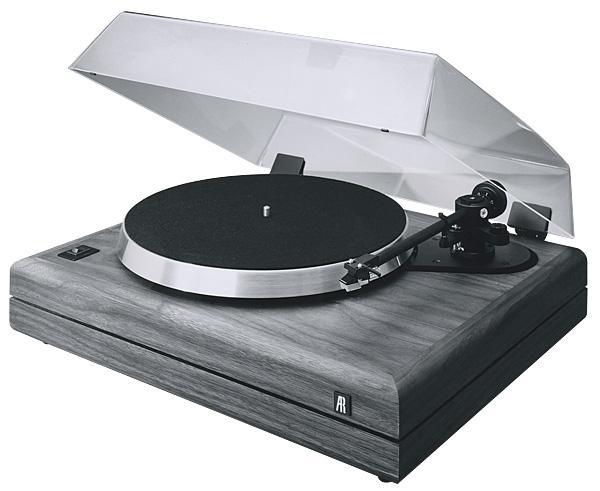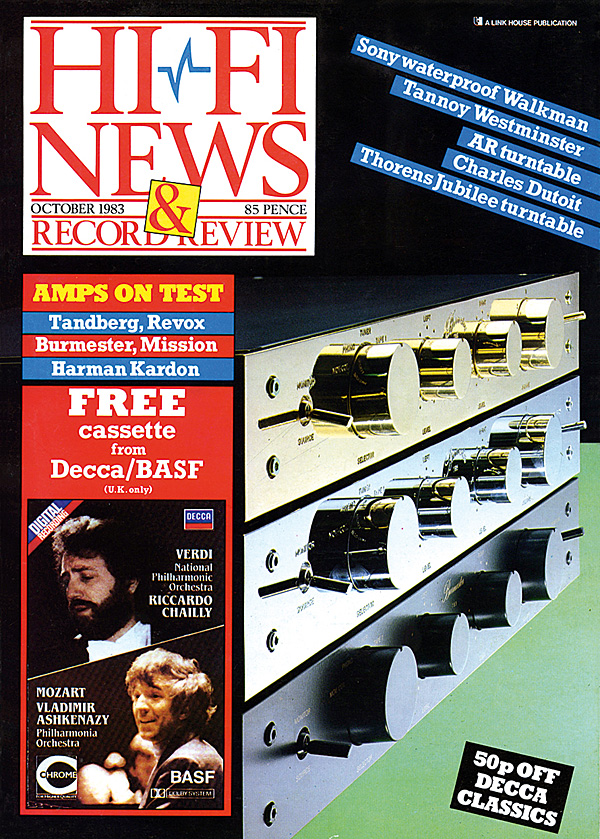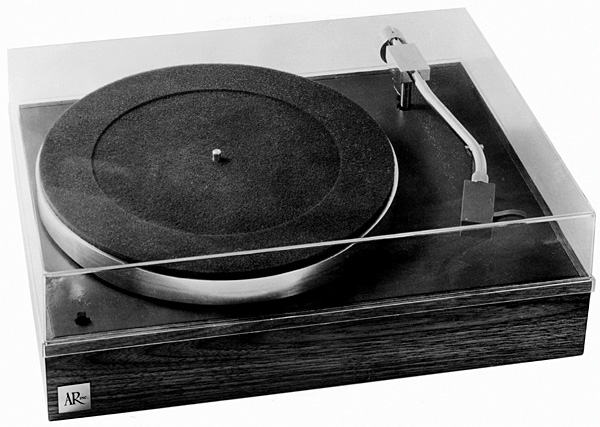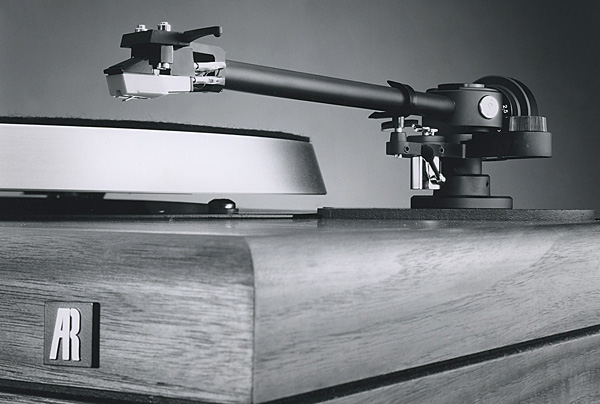State of the AR-T

 The Acoustic Research turntable is back! John Atkinson looks and listens
The Acoustic Research turntable is back! John Atkinson looks and listens
It is June 1982 and Compact Disc is still more science fiction than fact (although both sides have carried out their groundwork and preliminary skirmishing). The scene is the restaurant of Boston's classy Copley Plaza Hotel and a handful of British hi-fi journalists, fresh from the Chicago CES, are dining with Ron Fone, the (English) President of Teledyne Acoustic Research. Over dessert arises the subject of turntables and the question, 'Why doesn't anyone – apart from Rega, or Thorens – produce a good mid-price mass-market deck?'.

The answer, of course, is agreed by all present to be complex, and significant comments are made concerning the fact that all pretenders to the Linn crown end up costing in the same region. Nevertheless, the assembled hacks, fortified no doubt by the Copley's brandy, point out to Ron Fone that his company produced for some 17 years a turntable that would fit the bill extraordinarily well, a turntable featuring belt-drive from an AC synchronous motor and a three-spring suspended subchassis that set the style for the present generation. And in addition to this, surely such a turntable could be competitively priced as AR must still possess the tools and dies required?
Grey Area
Ron, of course, has all the facts and figures at his fingertips to show that the decision to discontinue the AR turntable was a wise one financially. Given that the tonearm which had been fitted to the AR was its weak point, the costs of retooling the subchassis to accept modern arms would be uncompetitively high. That while hi-fi enthusiasts might not have forsaken commonsense engineering solutions to the problems of turntable design, the mass market had voted with its credit cards for the solid-plinth, direct-drive concept that had fuelled the Japanese onslaught on hi-fi markets worldwide. That those markets would not be receptive to the introduction of an analogue turntable with CD just around the corner. And that he needs the extra grey hairs that go with product diversification in a time of recession like he needs a hole in the head!

We notice, however, that the conversation the following lunchtime, in AR's factory canteen, returns cyclically to the subject of disc players, and that there is a glint in Ron Fone's eye.
The next scene is set almost exactly a year after that Boston meeting, in the Acoustic Research room on the mezzanine floor of Chicago's McCormick Inn. 'Remember that discussion last year?' asks Ron Fone, 'We did it!' And there, in production prototype form, is a pretty belt-drive, suspended subchassis turntable with a universal arm-mounting system. Two months later, it is sitting in my living room, graced with reviewer Paul Messenger's Scottish-built black Linn lttok tonearm and a nearly new Asak cartridge, waiting for that first disc. But I am getting ahead of myself…
The History
Of all the hi-fi companies that have the word 'research' in their title, a case could be made for it being most appropriate in the case of Acoustic Research. From its foundation back in the '50s, going some of the way to finding the reasons 'Why?' would appear to have been as important as the making of money-spinning products incorporating the results of that research. Such workers as company founder Edgar Villchur, Roy Allison, and latterly Bob Berkovitz, have realised that knowing what question to ask is even more important than being able to answer it, a lesson the Japanese have demonstrably still to learn.

Thus, when AR decided that it would introduce a turntable, back in the early '60s, Villchur and his co-workers first looked hard at what would be the necessary design strategy, at what it was an LP turntable would be required to do. The conclusions they drew were as true back then as they are now (and it is one of life's true mysteries exactly why so many designers forgot them in the mid '70s).
The only relative motion between the moving parts of the pick-up cartridge generator must be due to the modulation in the record groove. The perfect motor has still to be invented, so the groove/stylus interface must be isolated from motor noise. The platter rotating mass and the compliance of a rubber belt form an effective low-pass filter so that only the drive to the platter is conveyed from the motor; all higher frequency noise is absorbed by the filter.
Turntables are used in soundfields and are placed upon supports capable of transmitting structural vibration: by mounting the arm and board and bearing/platter assembly on a subchassis and suspending the structure on springs from the top plate, the spring compliance and floating mass form another low-pass filter to reject such disturbances. High frequency noise from the motor mounted on the top plate also has to fight its way past that filter.

Impact Assessment
Putting aside the question of the contribution to sound quality of structural resonances in the subchassis and the damping/reactive properties of the mat, that leaves speed stability and rumble from the bearing transmitted directly to the stylus. The first is optimised by choice of motor and tuning of the Q of the belt/platter filter, the second by good engineering practice and choice of materials. If that all seems so obvious, just reflect on how few turntables today fulfil those essential criteria.
lt is hard now to realise the impact the introduction of the AR turntable had. In those fondly remembered days, enthusiasts still thought in terms of separate components and mass equalled quality. If you wanted a high performance speaker, you bought one or more drive units and put them into as large and heavy a box as was domestically acceptable.
For your turntable, if you aspired to the great, you bought a Garrard 301 idler-wheel drive chassis and mounted it in your own large and heavy plinth, otherwise you bought a conventional chassis – and put it in your own plinth.


















































